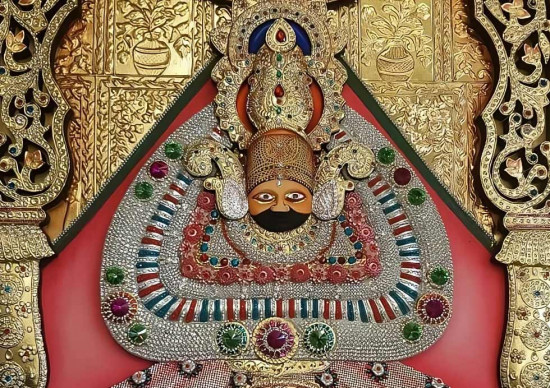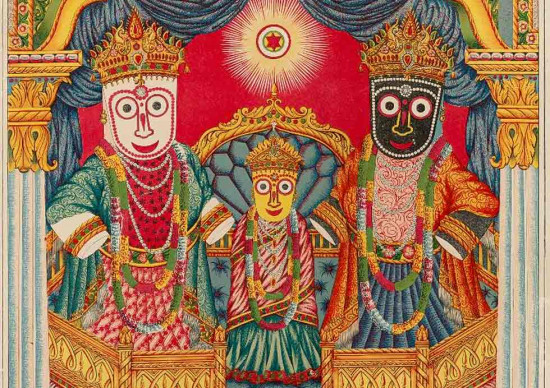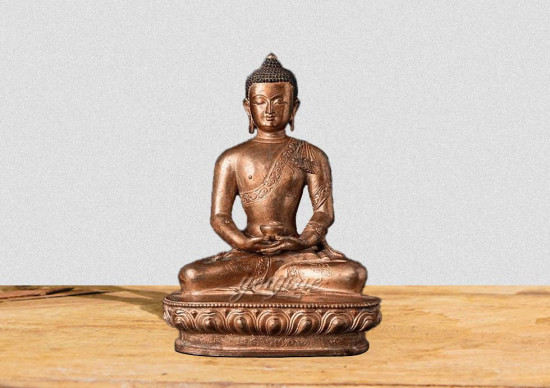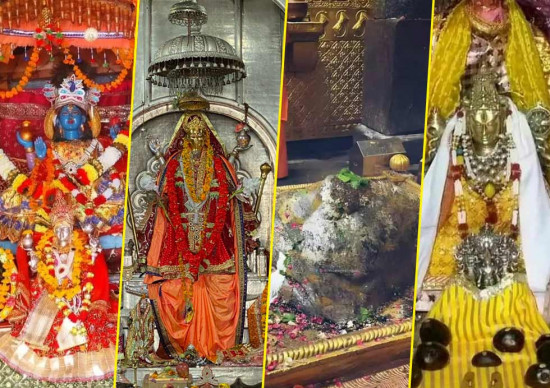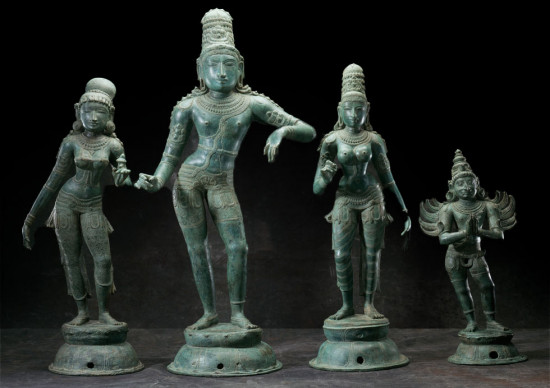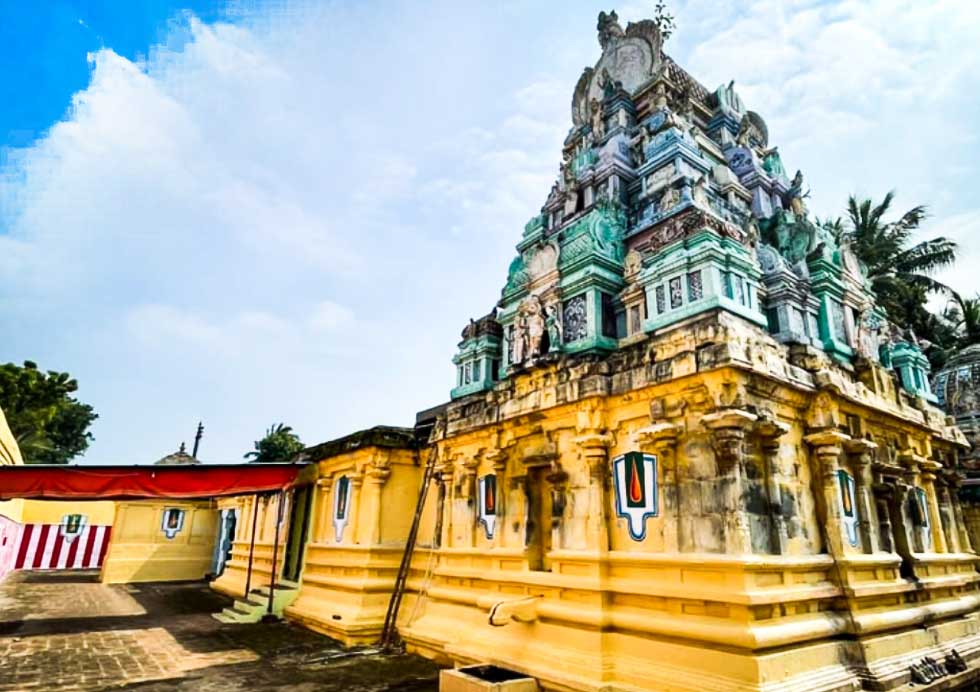
The Gajendra Varadha Temple, nestled in the serene village of Thirukkavithalam near Papanasam, Tamil Nadu, is a sacred haven devoted to Lord Vishnu. With a history dating back to the late 8th century CE, it boasts a blend of Medieval Chola, Vijayanagar, and Madurai Nayak architectural influences. Surrounded by a protective brick wall, the temple features a five-tier entrance tower and houses the reclining deity, Gajendra Varadar, in the sanctum.
As devotees enter, they’re enveloped in an aura of tranquility and devotion. The intricate carvings and sculptures on the temple walls depict tales from Hindu mythology, offering a visual feast for the spiritually inclined. Notable shrines within include Ramanavalli, Yoga Narasimhar, Sudarsana, Garuda, and the Alvars. The temple’s sacred tanks, Gajendra Pushkarani and Kapila Theertham, add to the spiritual ambiance, making it a cherished destination for pilgrims seeking solace and connection with the divine.
One of the prominent features of the Gajendra Varadha Temple is its association with the legendary tale of Gajendra Moksha, a significant episode from the Hindu scriptures. Pilgrims often come here to seek blessings for liberation, spiritual enlightenment, and protection from life’s challenges. The temple hosts various rituals and festivals throughout the year, adding vibrancy to its sacred ambiance. Devotees partake in these celebrations, fostering a sense of community and devotion.
Visitors can explore the lush surroundings and engage in moments of quiet contemplation in the temple’s courtyards. The Gajendra Varadha Temple stands not only as a religious landmark but also as a cultural treasure, inviting all to experience the profound connection between divinity and heritage in the heart of Tamil Nadu.
As devotees enter, they’re enveloped in an aura of tranquility and devotion. The intricate carvings and sculptures on the temple walls depict tales from Hindu mythology, offering a visual feast for the spiritually inclined. Notable shrines within include Ramanavalli, Yoga Narasimhar, Sudarsana, Garuda, and the Alvars. The temple’s sacred tanks, Gajendra Pushkarani and Kapila Theertham, add to the spiritual ambiance, making it a cherished destination for pilgrims seeking solace and connection with the divine.
One of the prominent features of the Gajendra Varadha Temple is its association with the legendary tale of Gajendra Moksha, a significant episode from the Hindu scriptures. Pilgrims often come here to seek blessings for liberation, spiritual enlightenment, and protection from life’s challenges. The temple hosts various rituals and festivals throughout the year, adding vibrancy to its sacred ambiance. Devotees partake in these celebrations, fostering a sense of community and devotion.
Visitors can explore the lush surroundings and engage in moments of quiet contemplation in the temple’s courtyards. The Gajendra Varadha Temple stands not only as a religious landmark but also as a cultural treasure, inviting all to experience the profound connection between divinity and heritage in the heart of Tamil Nadu.
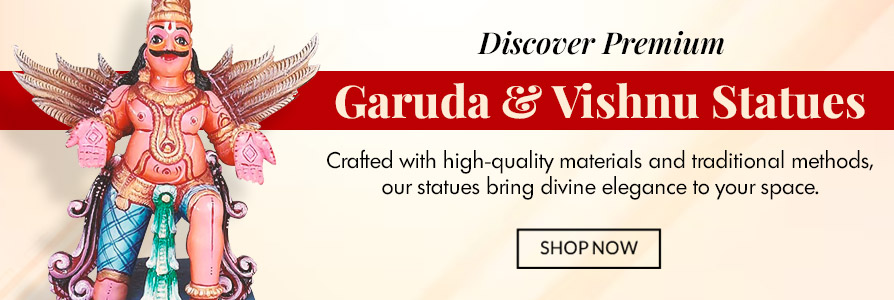
The Story of Gajendra Moksha
Once upon a time, there was an elephant named Gajendra who lived in a beautiful garden called Ritumat. This garden was on Mount Trikuta. Gajendra was the king of all the elephants in his group. One day, he went to a nearby lake to pick lotus flowers for a prayer to Vishnu.
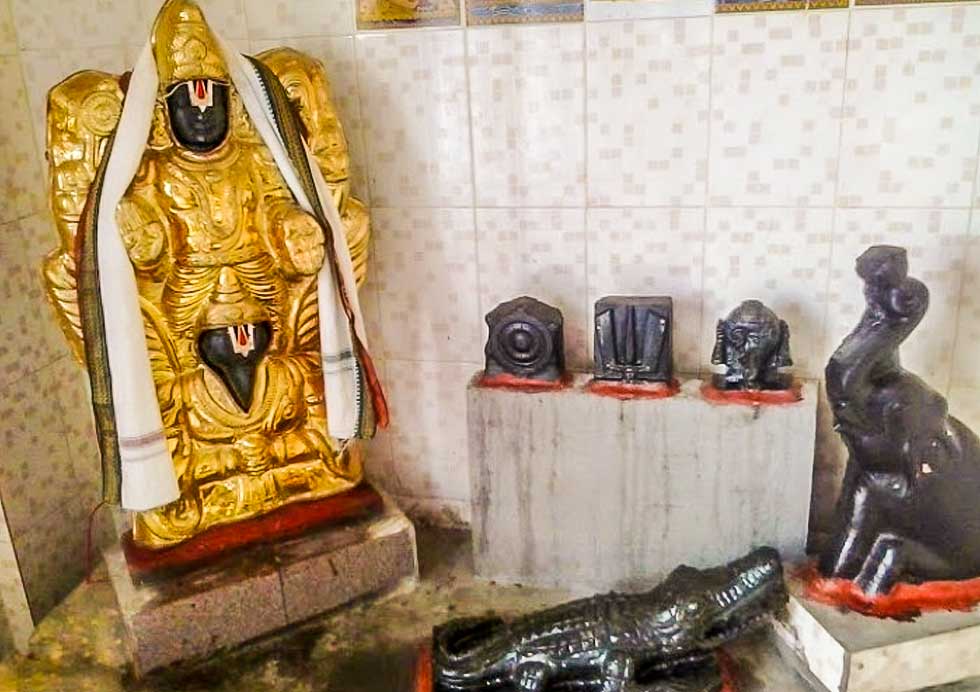
Suddenly, a crocodile from the lake attacked Gajendra and grabbed his leg. Gajendra tried hard to escape, and his friends tried to help, but the crocodile wouldn’t let go. When they saw that Gajendra was in serious trouble, they left him alone. Gajendra trumpeted in pain and helplessness. When he had no energy left, he called to Vishnu for help, holding a lotus up as an offering.
In response to Gajendra’s desperate prayer for help, Lord Vishnu mounted on his divine vahana, Garuda, and rushed to the scene. Witnessing Vishnu approaching, Gajendra, in a gesture of devotion, lifted a lotus with his trunk. Pleased by Gajendra’s sincere act and devotion, Lord Vishnu employed his Sudarshana Chakra, swiftly cutting off the crocodile’s head and liberating Gajendra from the perilous situation.
Overwhelmed with gratitude, Gajendra prostrated himself before Lord Vishnu, acknowledging the divine intervention that had saved him from imminent danger. Lord Vishnu told Gajendra that in a previous life, he was King Indradyumna, a devotee of him. Due to disrespect to the sage Agastya, he was cursed to be reborn as an elephant. Because of his devotion to Vishnu, the deity made him Gajendra to teach him the concept of Kaivalya, beyond the realms of gods. Gajendra would attain moksha when he left all pride and surrendered to Vishnu.
The crocodile, in its past life, was a Gandharva king named Huhu. The sage Devala cursed him to become a crocodile, but also told him that Vishnu would free him from the cycle of birth and death. And that’s the story of Gajendra and how he found liberation with the help of Vishnu.
In response to Gajendra’s desperate prayer for help, Lord Vishnu mounted on his divine vahana, Garuda, and rushed to the scene. Witnessing Vishnu approaching, Gajendra, in a gesture of devotion, lifted a lotus with his trunk. Pleased by Gajendra’s sincere act and devotion, Lord Vishnu employed his Sudarshana Chakra, swiftly cutting off the crocodile’s head and liberating Gajendra from the perilous situation.
Overwhelmed with gratitude, Gajendra prostrated himself before Lord Vishnu, acknowledging the divine intervention that had saved him from imminent danger. Lord Vishnu told Gajendra that in a previous life, he was King Indradyumna, a devotee of him. Due to disrespect to the sage Agastya, he was cursed to be reborn as an elephant. Because of his devotion to Vishnu, the deity made him Gajendra to teach him the concept of Kaivalya, beyond the realms of gods. Gajendra would attain moksha when he left all pride and surrendered to Vishnu.
The crocodile, in its past life, was a Gandharva king named Huhu. The sage Devala cursed him to become a crocodile, but also told him that Vishnu would free him from the cycle of birth and death. And that’s the story of Gajendra and how he found liberation with the help of Vishnu.
Gajendra Moksha Stotra: The Sacred Hymn of Liberation
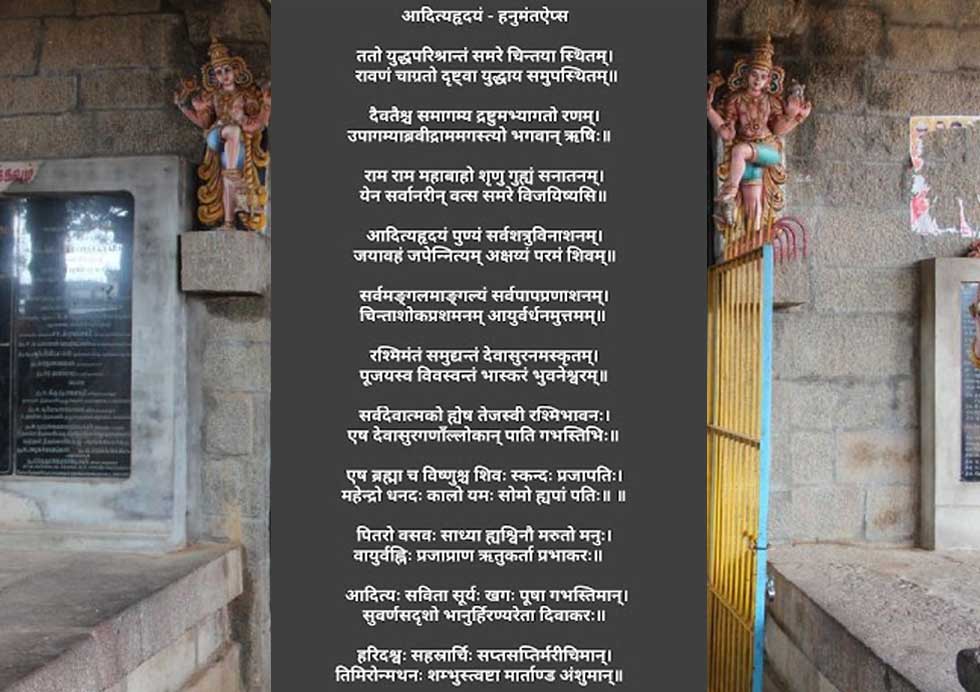
The prayer made by Gajendra became a famous hymn called the Gajendra Stuti. This hymn was later included as the first hymn of the Vishnu Sahasranama, which consists of the 1,000 names of Vishnu. It resonates with the spirit of liberation. This sacred composition unfolds a tale of surrender, resilience, and the intervention of Lord Vishnu.
As Gajendra faced the grip of a relentless crocodile, he turned to Vishnu with a heart full of prayer. The words he uttered, captured in the verses of Gajendra Moksha Stotra, transcend time, carrying the essence of devotion and the quest for release from worldly struggles.
Each verse of this hymn serves as a poignant dialogue between the devoted soul and the divine. The hymn encapsulates the fervent plea for liberation from the clutches of life’s challenges. It weaves a tapestry of emotions, showcasing Gajendra’s unwavering faith and Vishnu’s swift response to the call of his devotee.
Gajendra Moksha Stotra stands as a testament to the transformative power of devotion and the divine grace that brings liberation to those who seek it. In the rhythmic cadence of its verses, one can feel the heartbeat of a soul reaching out to the cosmic forces, seeking deliverance and finding refuge in the compassionate embrace of Lord Vishnu.
As Gajendra faced the grip of a relentless crocodile, he turned to Vishnu with a heart full of prayer. The words he uttered, captured in the verses of Gajendra Moksha Stotra, transcend time, carrying the essence of devotion and the quest for release from worldly struggles.
Each verse of this hymn serves as a poignant dialogue between the devoted soul and the divine. The hymn encapsulates the fervent plea for liberation from the clutches of life’s challenges. It weaves a tapestry of emotions, showcasing Gajendra’s unwavering faith and Vishnu’s swift response to the call of his devotee.
Gajendra Moksha Stotra stands as a testament to the transformative power of devotion and the divine grace that brings liberation to those who seek it. In the rhythmic cadence of its verses, one can feel the heartbeat of a soul reaching out to the cosmic forces, seeking deliverance and finding refuge in the compassionate embrace of Lord Vishnu.
Architecture

The Gajendra Varadha Temple in Thirukkavithalam boasts a splendid architectural style that reflects the rich heritage of South India. The temple, believed to be built by the Medieval Cholas in the late 8th century CE, features intricate carvings and sculptures narrating tales from Hindu mythology. Enclosed by a brick wall, it includes a five-tier entrance tower (rajagopuram) and a single precinct. The prime deity, Gajendra Varadar, lies in the sanctum in a reclining posture known as Bhujanga sayanam. The vimana (roof above the sanctum) is named Ganganakrutha Vimanam. Additionally, the temple houses separate shrines for various deities, contributing to its architectural magnificence.
Vibrant Festivals and Sacred Rituals at Gajendra Varadha Temple
The temple is vibrant with festivals and religious practices conducted by the dedicated priests. Following the traditions of Vishnu temples in Tamil Nadu, the Vaishnavaite community, representing the Brahmin varna, oversees the rituals. Rituals are performed six times daily, starting with Ushathkalam at 7 a.m., and concluding with Ardha Jamam at 8:00 p.m. Each ritual involves alangaram (decoration), neivethanam (food offering), and deepa aradanai (lamp waving) for both Gajendra Varadhan and Ramanavalli. During the final worship step, nadasvaram (pipe instrument) and tavil (percussion instrument) fill the air, priests recite sacred texts from the Vedas, and worshippers bow before the temple mast. Weekly, monthly, and fortnightly rituals are integral to the temple routine.
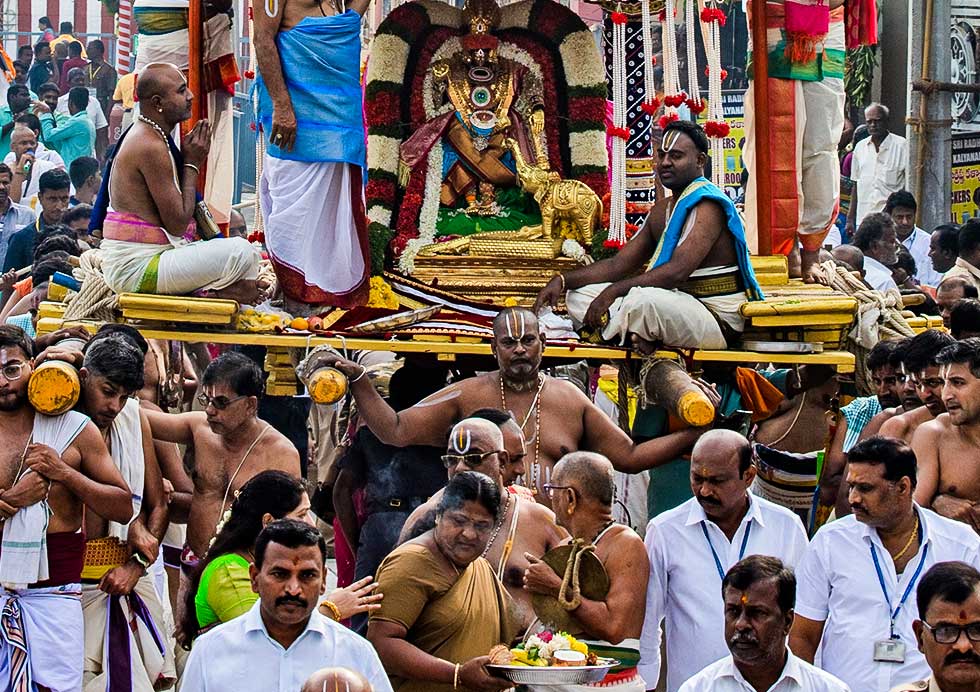
Major festivities include the Gajendra Moksha Leela in the Tamil month of Adi (July–August), the Chariot festival in Vaikasi (May–June) on the Visakam star, and the grand Brahmmotsavam, alongside various other celebrations dedicated to Lord Vishnu.
Cultural and Spiritual Tapestry of Gajendra Varadha Temple
The Gajendra Varadha Temple in Kabisthalam holds profound cultural and religious significance. Revered in the Nalayira Divya Prabandham, a 7th–9th-century Vaishnava canon, by Tirumalisai Alvar, the temple is classified as a Divya Desam—one of the 108 Vishnu temples mentioned in the book. Despite a passing mention in the verse, scholars now conclude that the reference is to Gajendra Varadar in this sacred place.
Religious scholars consider this temple unique as it portrays Vishnu descending to rescue an animal, a departure from his appearances to rescue sages, celestial bodies, or demons in other places. This distinction adds to the temple’s spiritual significance, emphasizing the compassionate aspect of the deity.
The Gajendra Varadha Temple is part of the Panchakanna (Krishnaranya) Kshetrams, with Kannan representing Krishna, the avatar of Vishnu. “Pancha” signifies five, and “Kshetrams” refers to holy places. Four of these temples, including Kabisthalam, are situated in Chola Nadu, with the fifth in Nadu Nadu. This collective of temples is distinct from the Pancha-dvarakas in North India, where Krishna is not the presiding deity. The processional deity in Kabisthalam is known as the “reclining Lord in the river banks,” highlighting the connection to the divine within the natural landscape.
The cultural and religious significance of the Gajendra Varadha Temple is embedded in its unique portrayal of divine compassion and its inclusion in the esteemed list of Divya Desams. Pilgrims and devotees visit this sacred site, connecting with its rich spiritual heritage and experiencing the divine presence of Lord Vishnu.
Religious scholars consider this temple unique as it portrays Vishnu descending to rescue an animal, a departure from his appearances to rescue sages, celestial bodies, or demons in other places. This distinction adds to the temple’s spiritual significance, emphasizing the compassionate aspect of the deity.
The Gajendra Varadha Temple is part of the Panchakanna (Krishnaranya) Kshetrams, with Kannan representing Krishna, the avatar of Vishnu. “Pancha” signifies five, and “Kshetrams” refers to holy places. Four of these temples, including Kabisthalam, are situated in Chola Nadu, with the fifth in Nadu Nadu. This collective of temples is distinct from the Pancha-dvarakas in North India, where Krishna is not the presiding deity. The processional deity in Kabisthalam is known as the “reclining Lord in the river banks,” highlighting the connection to the divine within the natural landscape.
The cultural and religious significance of the Gajendra Varadha Temple is embedded in its unique portrayal of divine compassion and its inclusion in the esteemed list of Divya Desams. Pilgrims and devotees visit this sacred site, connecting with its rich spiritual heritage and experiencing the divine presence of Lord Vishnu.

